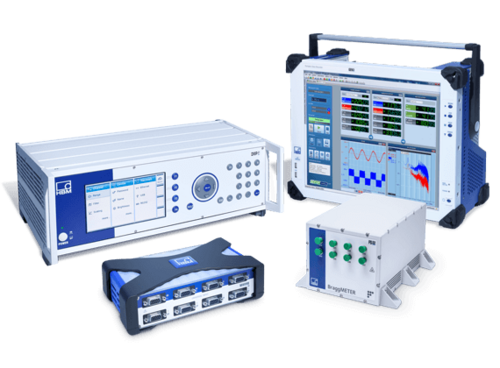Unlocking Insights: The Power of Advanced Data Acquisition Systems
Unlocking Insights: The Power of Advanced Data Acquisition Systems
Blog Article

In today's data-driven world, the ability to collect, analyze, and interpret information has become crucial across various sectors. This is where advanced data acquisition systems play a pivotal role. These systems serve as the backbone for gathering data from diverse sources, transforming raw information into actionable insights that organizations can harness to enhance their operations and decision-making processes.
As technology continues to evolve, the sophistication of data acquisition systems has also advanced. They are designed to handle large volumes of data efficiently and can integrate with various sensors and devices. Whether it's monitoring environmental conditions, assessing machine performance in manufacturing, or tracking patient health in medical settings, the power of a well-implemented data acquisition system can unlock new opportunities and drive innovation. Understanding their capabilities can be the key to gaining a competitive edge in any industry.
Key Components of Data Acquisition Systems
A Data Acquisition System typically consists of several key components that work together to gather and process data from various sources. The first crucial element is the sensor, which acts as the interface between the physical world and the acquisition system. Sensors can measure a wide range of parameters, such as temperature, pressure, and humidity, converting these physical measurements into electrical signals. The accuracy and type of sensor used can significantly influence the quality of the data collected.
The next essential component is the data acquisition hardware, which includes analog-to-digital converters and signal conditioning circuits. This hardware is responsible for converting the analog signals generated by the sensors into digital data that can be easily processed and analyzed. Signal conditioning is important because it helps to filter noise and enhance the quality of the data, ensuring that the system captures reliable measurements. The performance of this hardware can affect the overall system responsiveness and precision.
Lastly, data processing and storage systems are integral to a complete Data Acquisition System. Once the data has been digitized, it must be stored and processed for further analysis. This often involves the use of software applications that can interpret the data, provide visualization tools, and generate reports. Effective data management is critical for decision-making processes, as it allows users to track trends, perform statistical analysis, and derive meaningful insights from the collected information.
Benefits of Advanced Data Acquisition
Advanced data acquisition systems offer enhanced precision and accuracy in data collection. By utilizing modern sensors and refined algorithms, these systems minimize errors that can arise from manual data entry or outdated technology. This leads to more reliable data that organizations can trust for analysis and decision-making. Ultimately, such accuracy supports better outcomes in various applications, from industrial monitoring to scientific research.
Moreover, these systems facilitate real-time data processing and analysis. The ability to collect and analyze data on the fly provides organizations with immediate insights, allowing for quick adjustments and informed decision-making. This agility is particularly beneficial in dynamic environments, where timely responses can significantly impact productivity and efficiency. The integration of advanced data acquisition systems helps streamline operations by automating data handling processes.
Additionally, advanced data acquisition systems support scalability and integration with other technologies. Many modern systems are designed to easily connect with cloud platforms, IoT devices, and big data analytics tools. This allows organizations to expand their data capabilities without substantial overhauls of existing infrastructure. The flexibility and compatibility of these systems enable businesses to adapt to changing demands and leverage their data for strategic advantage.
Future Trends in Data Acquisition Technology
The future of data acquisition systems is set to be shaped by advancements in automation and artificial intelligence. As industries continue to seek greater efficiency, the integration of AI will enable data acquisition systems to not only collect but also analyze data in real-time. This predictive capability will allow organizations to make informed decisions faster, reducing downtime and improving operational efficiency. Automation will further streamline data collection processes, minimizing human error and increasing data accuracy.
Data Acquisition System
Another significant trend is the move towards more scalable and flexible data acquisition solutions. Cloud-based systems are becoming increasingly popular as they provide organizations with the ability to access and manage their data from anywhere. This flexibility allows companies to scale their data acquisition capabilities according to their needs, accommodating fluctuations in data volume and complexity without a significant investment in infrastructure. Moreover, this trend fosters collaboration as teams can work together from different locations, sharing insights and analytics seamlessly.
Lastly, the focus on cybersecurity will intensify as data acquisition systems become more interconnected. With the rise of the Internet of Things and the growing number of devices generating data, protecting sensitive information will be paramount. Future data acquisition technologies will need to incorporate robust security features to ensure data integrity and compliance with regulations. This emphasis on security will not only safeguard organizational data but will also enhance user trust in data acquisition systems, driving wider adoption across various sectors.
Report this page